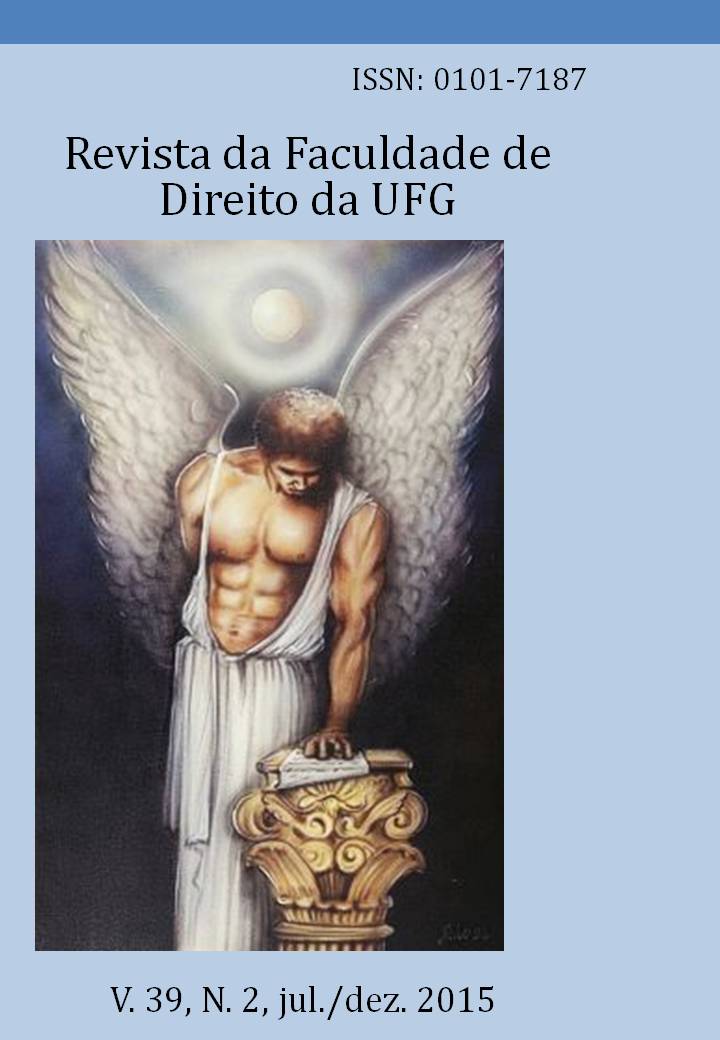INTEGRAÇÃO DO ÍNDIO À SOCIEDADE: TENTATIVA DE "DESINDIANIZAÇÃO" OU FIXAÇÃO DE CRITÉRIOS PARA O EXERCÍCIO DE DIREITOS? - DOI: http://dx.doi.org/10.5216/rfd.v39i2.37491
DOI:
https://doi.org/10.5216/rfd.v39i2.37491Palavras-chave:
Índio, Direitos de minoria, Assimilacionismo cultural, Direitos fundamentais indígenas.Resumo
RESUMO:
Até que ponto a integração do índio à sociedade nacional, questão crucial da tradição assimilacionista secular, influencia no exercício de direitos atribuídos pelo ordenamento jurídico pátrio aos indígenas? Qual o papel dos Tribunais na interpretação dos dispositivos constitucionais e legais a fim de conferir proteção aos índios e às comunidades indígenas, uma minoria que exige uma tutela estatal protetiva, e, ao mesmo tempo, garantir a isonomia de direitos e deveres entre os cidadãos brasileiros, dentre os quais se incluem os índios. Estas indagações constituem o alicerce deste estudo, que pretende demonstrar a evolução legislativa, bem como o funcionamento das instituições político-jurídicas de tutela dos indígenas no País, até a promulgação da Constituição Federal de 1988, que instituiu um novo paradigma de proteção aos povos indígenas, atribuindo-lhes uma série de direitos específicos apenas em razão de sua condição jurídica de índios. A atual Carta Política recepcionou sua cultura e formas de organização social, além de assegurar os meios para sua existência digna. Por outro lado, nosso ordenamento ainda exige a integração do índio para o exercício de alguns direitos civis, bem como para a sujeição a deveres, em especial, a responsabilidade penal. No entanto, a tendência é que a integração, neste aspecto, seja vista mais como um modo de proteção a um grupo vulnerável do que uma tentativa de assimilação cultural de uma minoria por um grupo social hegemônico na sociedade.
ABSTRACT:
To what extent would the integration of the Indian into the national society, crucial issue of secular assimilationist tradition, be influencing the exercise of rights granted by the Brazilian legal system to indigenous? What is the role of the courts in the interpretation of constitutional and legal clauses in order to give protection to the Indians and indigenous communities, a minority that requires a protective state custody, and, at the same time, ensuring equality of rights and duties among Brazilian citizens, including the Indians? These questions constitute the basic element of reflection in this article, which aims to demonstrate the legislation development process, as well as the functioning of political and legal institutions of Indian tutelage in the country, until the promulgation of the Federal Constitution (on 1988), which established a new paradigm for the protection of indigenous peoples, assigning them a series of specific rights only because of their legal status as Indians. The current Charter Policy hosted their culture and forms of social organization, and ensure the means for a dignified existence. On the other hand, our law also requires the integration of the Indian for the exercise of some civil rights, as well as placing under duties, in particular, the criminal liability. However, the trend is that integration, in this regard, be seen more as a way of protecting a vulnerable group than an attempt at cultural assimilation of a minority by a hegemonic social group in society.
Downloads
Downloads
Publicado
Como Citar
Edição
Seção
Licença
Os Autores que publicam nesta revista concedem à Revista da Faculdade de Direito da UFG uma licença mundial, sem royalties, sujeita aos termos e condições da Licença Jurídica Creative Commons Atribuição 3.0 Brasil Creative Commons Attribution License
Os autores concedem à RFD UFG todos os direitos autorais sobre os artigos nela publicados, que os mantêm com exclusividade até o advento de domínio público sobre os mesmos.
























